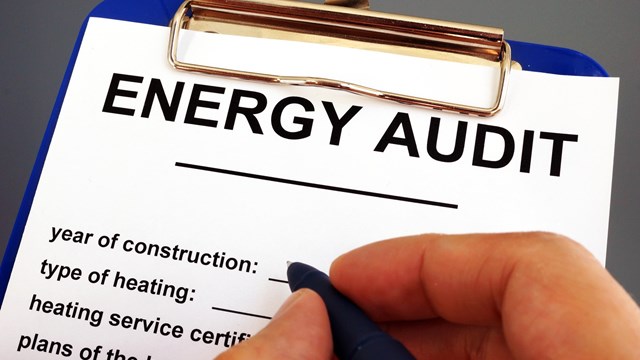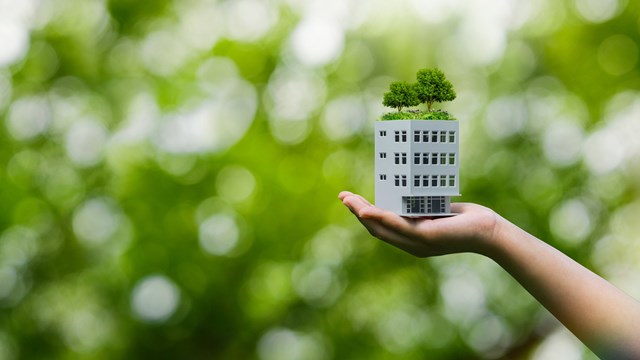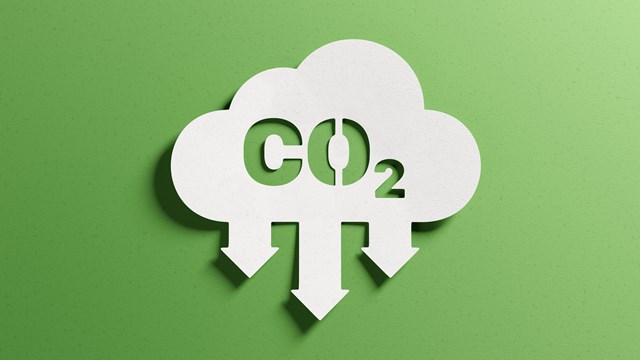
It seems that nearly everything is going “green” these days. Whether it’s the special green issue of a popular consumer magazine, an advertisement for a fuel-efficient hybrid car or a push toward environmentally friendly building materials, the message is clear: green is here to stay. But the idea of green building is not new—it’s been the primary mission of the U.S. Green Buildings Council (USGBC) since the organization’s founding in 1993.
This non-profit organization, based in Washington, D.C., emphasizes environmentally friendly construction and design through education, research and advocacy. Tied to its vision statement, the USGBC has an ambitious goal: green buildings for everyone within a generation.
“Our whole mission is in market transition,” says Judith Webb, a communications strategist for the USGBC. “We will run ourselves out of business because eventually, every building will be green.”
Why Go Green?
With the majority of people’s time spent indoors, a clean, healthy indoor environment is essential to everyone’s well-being.
“Green buildings are healthier places,” says Webb. “We want to create human habitats that have clean lighting [and] good air, that are non-toxic, that have good acoustics and so on. The building type doesn’t matter, [because] we spend 90 percent of our time indoors. Shouldn’t we do everything we can to make those spaces as healthy as they can be?”
And when buildings go green—or start incorporating green ideas and practices— the result yields not only a healthier indoor environment, but a reduction in energy use as well. Green buildings are also beneficial to the outdoor environment.
“When you make the air cleaner and fresher, you can also reduce the energy you use,” says Webb. “You can install fixtures that use less water and proactively recycle waste so it will not end up in a landfill. Those are the kinds of issues we’re trying to get people to make better decisions about.”
Though it’s been an ongoing push, going green seems to have finally caught on with the general public. So why is everyone going green all of a sudden?
“What changed was the price of oil, the price of energy, and global warming,” says Webb. “All of a sudden you’ve got a business case—a family budget reason to do all these things. And in addition, it’s good for the environment. Once people finally got there, they were motivated to make a change because it was financial, and then they realized the value and benefit.”
But as with anything that becomes ubiquitous, going green is subject to something Webb calls “greenwashing.” She cautions the public to be aware of this growing trend, and be mindful of products, service providers and companies claiming to be “green” and environmentally-friendly while not changing their practices at all, or even doing things that might be harmful to both indoor and outdoor environments.
The LEED Program
The organization’s Leadership in Energy and Environmental Design (LEED) program is setting the standard when it comes to green design and building. Through its third-party certification program, the USGBC has created criteria for what makes a truly green building—and it’s not just simply installing energy efficient light bulbs.
“We’ve developed LEED, a certification program that gives everyone a common language or metric against which to develop properties. We have a third party who comes in and certifies that it is a green building,” says Webb.
“It is more than installing CFLs and bamboo flooring,” Webb continues. “It’s not just using energy efficiently. It’s also water, materials, where you site the building, the air quality—all of those things within our rating system set a metric against which people can measure which side of the line they’re on. It’s rigorous, and you have to show documentation to someone who then evaluates it.”
The LEED program has created a benchmark, says Webb, and now that it’s in place, the results are measurable and have proven to be effective. “Because we have all these buildings that have been through the process, we can prove that if you do all these things, these are the results we can get. It’s replicable. Now we can go back and measure buildings on that standard, and know that they will save at least 30 percent in energy, have better air quality, and so on.”
USGBC in NYC
Though the U.S. Green Buildings Council is a national organization, it has more than 78 local chapters to help the organization meet its goals throughout the country. New York City has its own chapter: USGBCNY (www.usgbcny.org).
“We’ve grown dramatically,” says Russell Unger, executive director of USGBCNY. “When I started, I was the only full-time staff member. Now, we have a full-time staff of eight, including one of the city’s top engineers, an architect and an interior designer—arguably the greatest concentration of green building expertise of any non-profit on the East Coast.”
“With resources we have increased a lot of initiatives,” Unger continues. “One of the most important is developing curricula for teaching building trades and contractors about green building, including general and foundational information and information that’s specific to their expertise.”
The New York chapter is also working on a web-based green building resource center, headed up by Amalia Duarte, director of communications at USGBCNY. This resource will provide answers to commonly asked questions, such as “How do I green my apartment, building or office building?”
“All these areas have different needs and require different answers,” says Unger, adding that the chapter is translating the desire of the marketplace to go green, and determining how to train people to understand and apply the LEED rating system.
The New York chapter is governed by a 15-person board that is elected by the chapter’s active members. The board works to establish the chapter’s vision and oversees its programs and activities. In addition, it is responsible for maintaining USGBC New York’s financial health and legal compliance.
“I make sure that the things we do are in line with mission of organization,” says Fiona Cousins, board chair of USGBCNY. “Including moving the construction market from non-green to green buildings; translating it with the rest of the board into [plans] that make real and appropriate sense for the New York area; and making sure that resources are available for that.”
Uniquely New York
The New York chapter addresses the unique needs of New York City residents who live in high-rises or multi-family buildings. This is much different than living in, say, a single-family home in the suburbs, and as such, there are different considerations when going green.
“We’re still fairly new,” says Cousins, who is now in her second year as board chair, “so everything we’re doing at the moment is new, but the important thing is that we have a piece of work that is directed at the design community, and we have a strong education program for architects and engineers.”
In order to be more effective at spreading green building, USGBC has been building its relationships with developers as well. “We’re trying to find out what they need from New York and USGBC, [and] how those things might work together,” Cousins explains.
Going green is especially relevant in New York City.
“The multifamily building sector in New York is one of the largest sources of greenhouse gas emissions and is the second-largest building type in the city,” says Unger, adding that co-op and condo boards have a unique opportunity to embrace the greening of their buildings.
“People who choose to be on their boards have a social conscience, because they’re giving free time to be involved. They are a perfect audience for greening,” says Unger.
One of the issues facing New York’s residential buildings include antiquated steam heating systems that are neither cost-effective nor energy efficient.
“You see a lot of open windows in the winter because heating systems tend to be steam heat, and there are different ways to improve on those,” says Unger.
Getting Buy-Ins
In trying to make the case for green development, the chapter works with those in the design and construction trades to gain an understanding of their methods and practices.
“As a designer, the implementation is key as to whether the design actually works. That means getting to people who are doing the details and explaining why change is required,” says Cousins.
Although the USGBC New York chapter’s goal of transforming the non-green building market into a green building market is still some years off, its efforts have been paying off. The New York development community has been receptive to LEED and green building.
“The developer community in New York has bought in quite well to LEED and green building,” says Cousins. “If you look at big buildings going up now, you’ll begin to see that green buildings are almost considered the norm here. It’s becoming much more the norm. Being a consensus-based organization has been a very powerful tool in helping get buy-in from the people spending the money and the ones who are doing the work. The overall buy-in has really strengthened and helped” the credibility and visibility of the LEED rating standard.
Whether you’re making small changes by cutting down on energy usage, or going green in a big way with a newly constructed, LEED-certified building—its likely there’s always more that can be done. “Going green is changing and realizing that little things are not the end of it,” says Cousins. “It’s asking: what do you do next? There’s always someplace to go.”
Stephanie Mannino is a freelance writer and a frequent contributor toThe Cooperator.






Leave a Comment